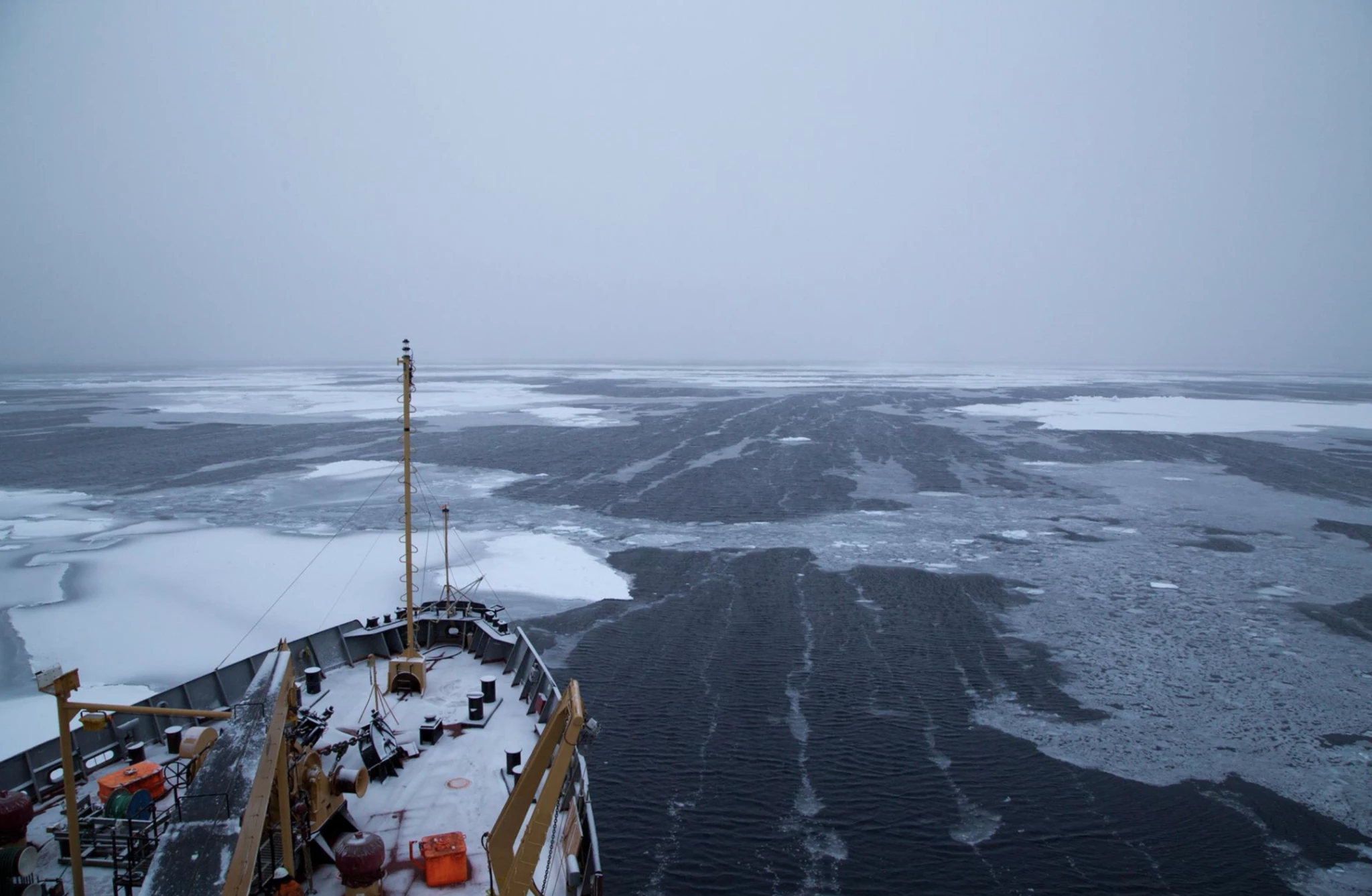In addition to rising air temperatures and warming waters, Arctic sea ice also has hostile weather conditions to contend with, and new analysis of an extreme event earlier this year suggests it may be more vulnerable to these than we thought. Scientists studying the effects of the strongest Arctic cyclone on record have found it caused a huge and rapid loss of sea ice, which was “pummeled” by heaving waves.
Cyclones are common weather events in the Arctic and are known to shape the way heat and moisture move through the region, but the storm that swept into the region to the northeast of Greenland in January this year was a doozy. As the cyclone roared across the Arctic Ocean, it energized the ocean waters to generate waves as tall as 8 meters (26 ft).
None of this was unexpected, with forecasters accurately predicting the onset of the storm up to eight days prior. What has come as a surprise, however, is the impacts it had on sea ice coverage in the area. New analysis of satellite data shows these waves maintained much of their strength as they rolled through the sea ice, traveling as far as 100 km (60 miles) towards the center of the ice pack and causing it to heave up and down by as much as 2 m (6 ft).
Six days after the storm, the sea ice was found to have thinned significantly, losing more than 0.5 m (1.5 ft) of thickness in certain areas.
“The loss of sea ice in six days was the biggest change we could find in the historical observations since 1979, and the area of ice lost was 30% greater than the previous record,” said lead author Ed Blanchard-Wrigglesworth, a research assistant professor of atmospheric sciences at the University of Washington. “The ice models did predict some loss, but only about half of what we saw in the real world.”
As for how the cyclone drove this rapid loss of sea ice, the scientists have a few ideas. The analysis rules out heat from the storm as a cause, but it is possible that the waves churned up warmer water from deeper layers of the ocean and melted the ice from below. The mere mechanical forces of the huge crashing waves is another possibility, which may have busted apart the ice floes more effectively than predicted by the models. The team says it is also possible that the sea ice was thinner than the models had suggested before the storm even hit.
One way the scientists may answer these questions is by placing sensors in front of a future storm as it approaches, gathering data to fill in the blanks. And they may have even fiercer cyclones on the horizon to study. Though climate change hasn’t been linked to this storm, scientists do expect Arctic cyclones to become more severe as the world continues to warm, with sea ice loss and increasing surface temperatures expected to boost and prolong their intensity.
The surprising loss of sea ice uncovered in the study suggests that ice models are underestimating the impacts of these big waves in the Arctic Ocean. This would impact the accuracy of forecasting of sea ice conditions, which is an important safety tool for those navigating Arctic waters and also influences the accuracy of weather forecasting in other regions.
“It was a monster storm, and the sea ice got pummeled,” said second author Melinda Webster. “And the sea ice models didn’t predict that loss, which suggests there are ways we could improve the model physics.”
The short video below offers a look at the waves rolling through the ice floes, while the research was published in the Journal of Geophysical Research–Atmospheres.
Source: University of Washington




